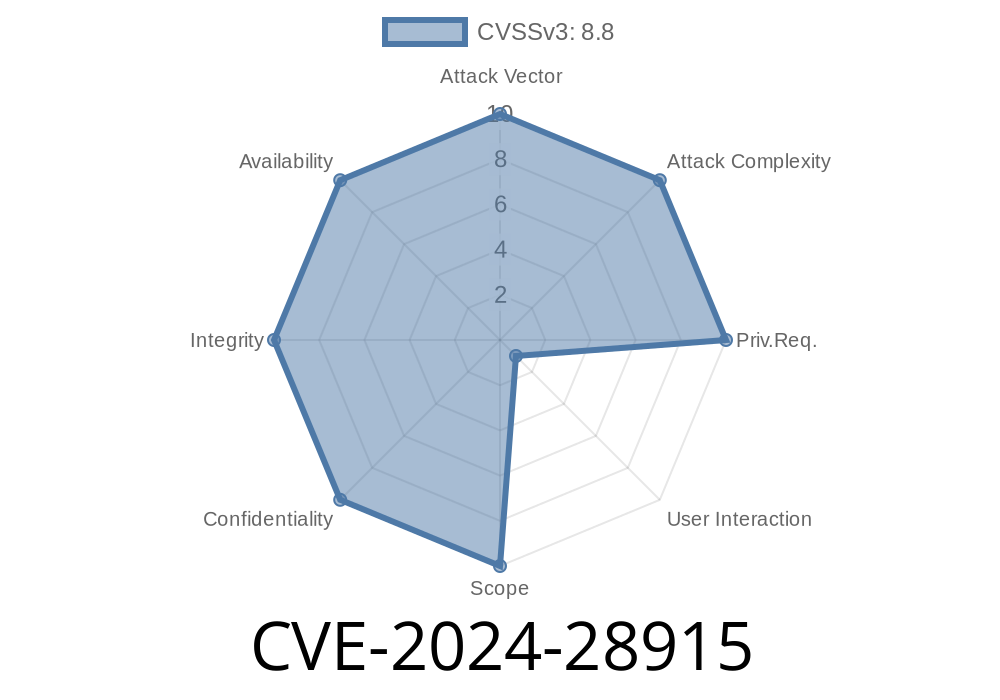On March 12, 2024, Microsoft published a security advisory about a critical vulnerability tracked as CVE-2024-28915. This vulnerability affects the widely-used Microsoft OLE DB Driver for SQL Server. If successfully exploited, it can allow an attacker to execute remote code on the victim's machine. For IT admins, developers, and security teams, understanding this flaw is absolutely crucial. In this post, I'll break down exactly what CVE-2024-28915 is, how it works, and what you can do to stay safe.
What is Microsoft OLE DB Driver for SQL Server?
Microsoft OLE DB Driver for SQL Server is a data access technology that lets applications connect to and interact with SQL Server databases using OLE DB APIs. This driver is used in countless Windows applications across enterprises world-wide. When a vulnerability is found here, it can have significant consequences.
A Quick Summary
The issue is a remote code execution (RCE) vulnerability in the Microsoft OLE DB Driver for SQL Server. An attacker can send a specially crafted connection request to the driver, which can trigger execution of malicious code with the same privileges of the application using the driver. This could lead to:
How Does the Exploit Work?
A flaw in the way the driver parses authentication responses from a SQL Server instance allows for memory corruption. When an attacker controls the SQL Server server (or is able to perform a man-in-the-middle attack), they can respond with a payload that exploits the parsing bug, leading to RCE.
Set up a rogue SQL Server controlled by the attacker.
2. Trick the victim app (using the vulnerable driver) to connect to this server with a malicious connection string.
The server responds with a specially crafted network packet.
4. The OLE DB driver processes this packet and, due to the vulnerability, executes code provided by the attacker.
Example Proof-of-Concept (PoC) Code
Below is a very simple Python snippet showing how an attacker might simulate the rogue SQL server to exploit this bug. For educational/demo use only!
import socket
# Listen as a fake SQL Server
listener = socket.socket(socket.AF_INET, socket.SOCK_STREAM)
listener.bind(("...", 1433))
listener.listen(1)
print("Fake SQL Server listening on port 1433...")
while True:
client, addr = listener.accept()
print("Connection from", addr)
# Send a malicious response that triggers the bug in OLE DB driver
# Not a real exploit, just an illustrative placeholder
payload = b'\x12\x34\x56\x78' + b'A' * 512 # This would be replaced by real exploit data
client.send(payload)
print("Sent malicious payload")
client.close()
Note: The real exploit would require crafting very specific packets to trigger the vulnerability. The above only illustrates the basic network logic.
Original References & Sources
- Microsoft Security Update Guide: CVE-2024-28915
- NVD Entry for CVE-2024-28915
- Microsoft OLE DB Driver for SQL Server Docs
- Security Researcher’s Writeup (if available)
`
Update Your Driver Immediately:
Download the latest (>= v19.3..) from Microsoft's official site.
Final Thoughts
CVE-2024-28915 shows once again how components deep inside enterprise stacks can be prime targets for attackers. The best defense is rapid patching and basic, sound network hygiene.
Don’t wait. If you use MS OLE DB for SQL Server anywhere in your environment, update now and check your logs for unusual SQL connection attempts.
Stay safe!
If you found this post useful, please share it with your colleagues and follow us for more exclusive security analysis.
*Disclaimer: This article is for informational purposes only. Do not attempt to exploit this vulnerability in any environment you do not own or have permission to test.*
Timeline
Published on: 04/09/2024 17:15:51 UTC
Last modified on: 04/10/2024 13:24:00 UTC
